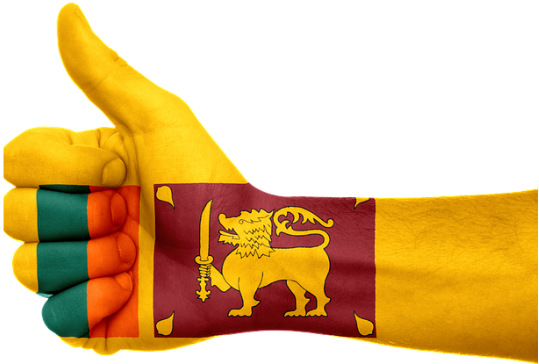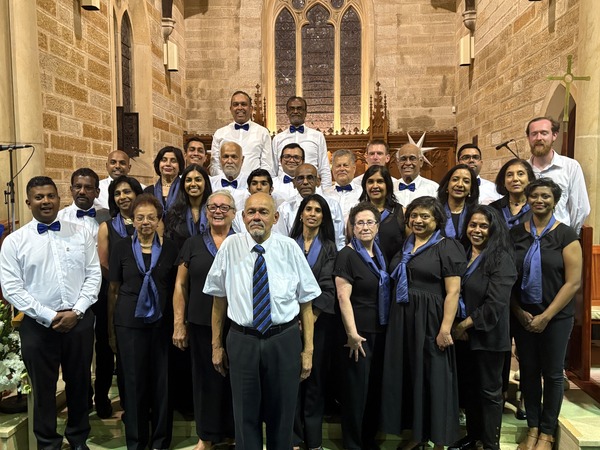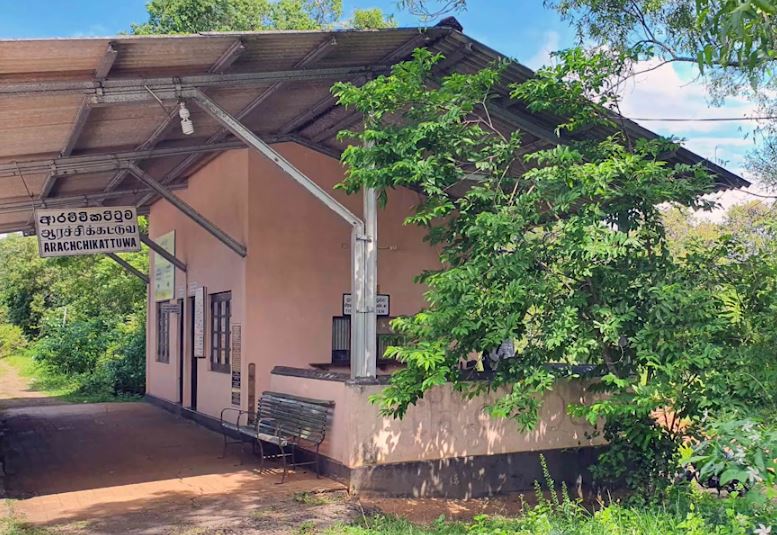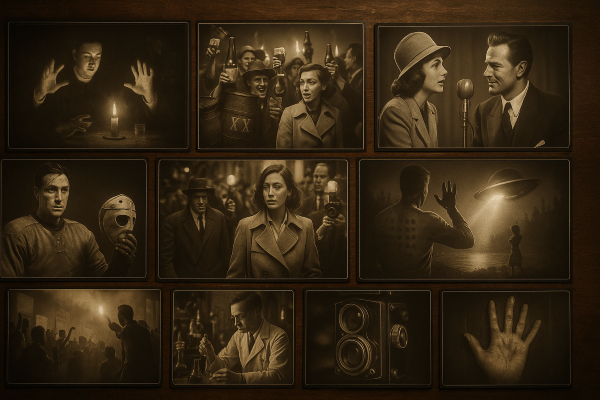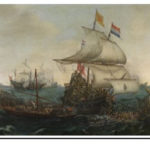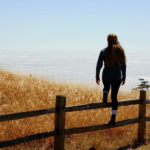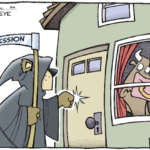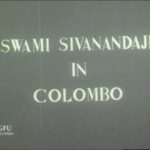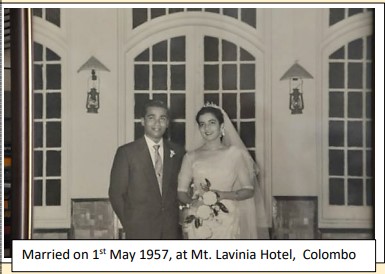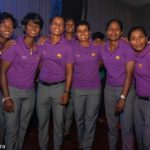Natural Reserve over 40 years ago-by Lyn de Alwis
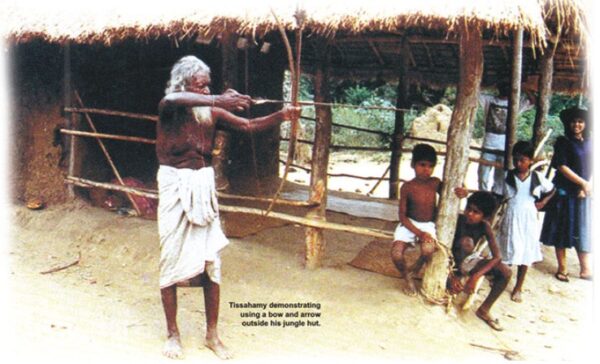
Source:Island
And at last we arrived at Rugamtota! We were on the threshold of Yala’s wonderland beyond the Menik Ganga, with its vast plains from which rose the rock massifs of Banawelkema, Mayagala and Muduntalawa. There had been many a time when I sat on a fallen kumbuk log in front of our Kosgasmankada camp and gazed at the thick jungle across the river, roadless, impenetrable except on foot and with only rock caves to shelter in. I would go there one day! I thought.
Here I was, with the cream of Yala’s fearless men: K. David, W.L.A. Piyadasa and Kirineris led by the most senior Game Ranger and tough leader, G.N.Q. de Silva. We forded the river with much difficulty, our groaning jeep protesting loudly as we revved up the steep bank of Menik Ganga, there being no easy bridges in those days.
Strict Natural Reserve
We had spent many exciting days planning our route march, in collecting our meagre provisions and cutting out any item we thought was a luxury. Yet when the desiderata were assembled at Banawelkema, where the jeeps deposited us, each of us had loads which caused much pain to arms and backs, and tended to fix our necks immovably in one direction.
From Rugantota to Banawelkema is eight and a half miles, with the Strict Natural Reserve on the right and Yala Block 3 on the left. This boundary also separates the Uva and Southern Provinces. At 2.00 pm we began walking, or wading would be a better word, for almost immediately we struck a matted growth of nelu which we had to overcome by doing what in swimming is called the breast-stroke. We could not possibly see through this eight-foot tangle, and lest we patted an elephant on the back, we spoke loudly to each other now and again.
At the first glade, Kottapudaina, we saw our first animals, which were two sambhurs, mother and son. They stopped in their tracks and looked at us unconcerned, or perhaps terribly confused, for clumsily harnessed as we were, we must have looked bizarre. Five adjutant storks took themselves heavily into the air and a lone, aging wild boar with twisted tusks, sauntered across our path. There was something very elemental about this scene, for we felt accepted.
We trundled on through more nelu, now laced with karamba and kukurumang whose vicious thorns tore into our clothes or deftly picked off our hats. I remember turning left at a stream-crossing and continuing our torrid journey. Then quite suddenly, through the forest curtain, there loomed to our right the towering black rock, Lunuatugalge which was our destination. Gone were the fatigue and the anxiety on seeing this fabulous rock, rising 400 feet in a gentle arc sheltering one of the most beautiful caves in Sri Lanka. It is approximately 200 feet long and as much as 30 feet broad in places, and had evidently housed many families in ancient times, for it had been partitioned with brick walls to form about a dozen rooms. The carving of the drip ledge of the cave must have been a stupendous feat, for it is at the upper end of the arc at a height of some 100 feet above ground.
It was a pity the cave was not habitable, for dust lay thickly about, wasps and bambara bees were everywhere and bears appeared to occupy some of the rooms. Going through the cave and climbing its roof, we came upon two reasonably flat rocks where we decided to stay put. While Pat Decker and Ranger de Silva enthused about the view, I looked around with some trepidation. I observed that the rock assigned to the three of us, was not flat but was gently sloping and, at its bottom it just fell away more than I00 feet, with only the branches of a palu tree to hold us if we accidentally fell over. The wind velocity was also not in our favour, making our perch rather precarious.
However, by the time we had unloaded and unpacked and the first round of hot tea came up, I felt I had accomplished something. The view was indeed enchanting. It looked more like a wilderness of rock with a sprinkling of forest. There was Dematagala 1,008 feet high, the highest rockscape in the whole of Yala, and Thalaguruhela on whose summit (800 feet) are the remains of a stupa; and in its shadow the skull-like Pettigala, Mayagala (Wadambuwa) in Block 3 and so on. Our minds were taken back to pre-Christian times when in this belt of jungle between the rivers Menik and Kumbukkan was a flourishing civilisation, going hand in hand with the rise of Kataragama and Mahagama (Tissamaharama).
The shrill trumpet of an elephant close by broadcast our intrusion and the immediate belling of an agitated sambhur told us that beneath the green carpet it was already dusk. We descended to prepare for the night. Almost immediately the full moon appeared, unusually large and clear, behind Dematagala. It was the night of the Poson Poya.
Rathu-walaha
I looked around at my staff and realized they all belonged to Yala. Piyadasa was a nephew of the famous Andiris, the grand old man of Yala, while David was a Kumana stalwart and the son of Karolis, a Range Assistant. Kirineris happened to be the jolly, irrepressible son-in-law of the legendary Menika, ‘chieftain’ of the Kumana village. These then were the ‘jungle graduates’ schooled in the wild and where knowledge, experience and dedication will forever remain unsurpassed.
Among other subjects we hoped to study on this expedition, was the occurrence of rathu-walaha, a species of brown bear recorded only from this part of Sri Lanka. The late Mr. C.W. Nicholas, the first Warden of the Department of Wildlife had alluded to this animal in his Administration Report for 1952. The existence of a brown bear in this Reserve, first reported by Mr. H. Neville in The Taprobanian in 1885 is still believed in and there are men who claim to have seen it in recent years. It is said to be smaller in size than the (normal) sloth bear, dark brown and not black in colour, more gregarious, aggressive and fierce. Its former range is said to have extended as far as Panama.
Neville’s passage and the legends concerning it related round our dying campfire the previous night, haunted me as we plunged through the unrelenting thorny scrub next morning. Every grunt of an unseen pig relayed through the nelu was magnified into the frenzied cough of a charging bear; and every squeal of an infant langur came down from the lofty canopy as the death yells of fleeing Nittaevo. Ahead of me Ranger de Silva had stopped and was showing his men the fresh claw marks of a bear, which had clambered up a neralu tree. Kirineris and David came up with some leaves and flowers which had defied identification even in their experienced hands. The younger watchers asked for water, which was doled out in thimble-like mugs by Piyadasa. When an Oliver Twist among them craved for more, he had only to be sternly reminded by the ranger ‘Nothing more till you find your own water at the next pool, wherever that is’.
The compass, on which we were pinning our faith, showed that we were heading south-east, slightly wide of Dematagala. ‘I remember some interesting plains around here’, said Ranger de Silva grabbing his battle-axe and disappearing through the trees. It was a signal to follow although I would have preferred to sit under a tree and let the jungle talk to me.
The plains were indeed attractive and refreshing after the dense vegetation of the high forest, but what caught my eye was a magnificent sambhur standing at the far end of a glade, dripping mud. We had not seen water for hours now and this was a surprise. ‘Boys’ said Kirineris ‘there’s water in that unawe’. An unawe, if I may explain, is a set-up by which water oozes through the soil from a spring. This is a heaven-sent gift to the animals during the dry season and these are fairly well spaced out in Yala block 3 and the Strict Natural Reserve. The sambhur left, grumbling. The water in the wallow was, of course, undrinkable but a little further up a puddle was dug out and left to settle for 10 minutes. We drank our fill and collected some more for the rest of the day.
Bin-kohomba
At this point we had another surprise, a rather unpleasant one, for there on a shrub close by was the unmistakable jungle sign to show that a person or persons had gone groping before us. The Ranger and Kirineris examined the three distinct slashes one under the other, on a weera tree and declared that they were not more than a week old. Poachers? We began tracking. It was easy following the broken twigs, and we heaved a sigh of relief when we came upon a rambling rock on which the intruders had halted. The signs were those of villagers who stole into this area to collect bin-kohomba, a plant which fetches a high price in Kataragama, from where it is marketed to other parts of the country. Its juice, which is intensely bitter, is said to be a tonic and also a cure for ‘mild’ leprosy.
Wild beasts and bees
The search for new archaeological remains and inscriptions led us to a sizeable water-hole, unnamed and not marked on the map. We approached it cautiously, testing the wind. Piyadasa got there first and beckoned to us excitedly. He showed a buffalo, which as we approached rose suspiciously, swirling round on his own axis till he located our clicking cameras. In the few seconds before he identified us and prepared to charge I saw in him a fearful frown and wildness. Kirineris stepped out with gun in hand, a movement which changed the buffalo’s mind. To Kirineris, a Kumana villager, buffalo is the most unpleasant and feared of all Yala’s inhabitants.
This water-hole was apparently well patronized and having built a ‘hide’ of rock boulders we sat down. It was a hot day with a gusty wind and the time was just after 12 noon. Conditions were ideal to bring animals out for a noonday drink.
They did not disappoint us. A group of unsuspecting, carefree sambhur came first. They virtually frolicked on the edge before plunging happily into the water. The base of the buck’s antlers was as thick as my knee. There they lay until a wild boar spoilt the serenity of the place by coming up behind us, getting our scent and crashing headlong into the bush. Up and out went the sambhur as though they were shot. Throughout the hour spent at this lonely pool several such scenes with different players held us enthralled.
To me, being carefree and undisturbed was the spirit of the Strict Natural Reserve. We wandered several miles scouting round for water-holes and kemas (rock pools) and marking them on a map; collecting samples of unidentified plants, geological specimens, and other items, and all the while trying to return by a circuitous route. This became the pattern of our meandering over the next few days after which all that was new was sifted, weighed and recorded.
Our presence on the rock was attracting undue attention. The night before, too, we heard a leopard sawing close to the kema at which we bathed. And today after we returned from the gruelling trek I felt an uneasiness. The bambara bees, too, resented our intrusion and had sent down a few soldiers to warn us. Fortunately we immediately realized why. The smoke from our camp-fire was eddying up to their hives and causing them distress. We had to reduce our camp-fires to one. The wind was also building up to add to our discomfort, and once it blew the hurricane lamp right off its crude tripod.
Skirmish with a bear
I was disappointed that we had not encountered a normal bear, let alone a rathu-valaha. Pat agreed, between scowls as he scraped off columns of ticks from his shins. The men sensed our disappointment, too, and came round the fire to console us with some delightful folk lore. David was nearest the fire and was relating a particularly complicated story even for a folk tale, when for a moment we thought he had lost the theme, for he said ‘Don’t move or get excited, but I think it’s a bear.’ Someone groaned. But Ranger de Silva was quick on the uptake and peering round rasped to me ‘Sir, it’s a bear, a large one’. Pat and I saw it together not more than four feet from David, behind the red embers. He looked enormous and stood there swinging his head and shoulders as bears usually do.
The situation was an impossible one. I looked anxiously at the 100 foot drop. It was no place to have a serious misunderstanding with a ferocious animal equipped with dreadful claws and teeth. Besides, he could not be seen in the darkness if it came to a showdown. In the meantime he waddled closer. The best thing to do was to keep talking, until we got out the three-celled flashlights. Having the lights on him we all stood up together and swore at him. With a muffled roar, which sounded to us like a deafening charge, he shuffled backwards. We advanced. That shook him a bit and he scurried down to one of the rooms in the cave. By now we were once more calm and sat there watching him many minutes until he got up and faded away into the night.
During the rest of our stay we had more incidents but none to equal this and I made sure of one thing. I cut a stout pole from a wewarana tree and kept it very close to me at all times. On the last night before we were to leave we braved the bambara bees and lit two fires once more, for some jungle message was conveyed to us that we would be visited again.
I wanted to keep awake but not with the kind of fatigue one has after 11 hours of walking. Sleep must have come swiftly and deeply, for when I awoke to some hoarse whispers about me, it was already dawn. David came up, and prodding with the club showed me what the excitement was about. Not two yards from where we all slept and near the hurricane lamp was unmistakable evidence left by ‘our bear’ as he padded down to claim his rightful drink from the rock pool.
Thank God, we had all slept so well!
(The writer, now deceased, was both Director of the National Zoological Gardens and Director of Wildlife Conservation – excerpted from ??????? compiled by CG Uragoda)

